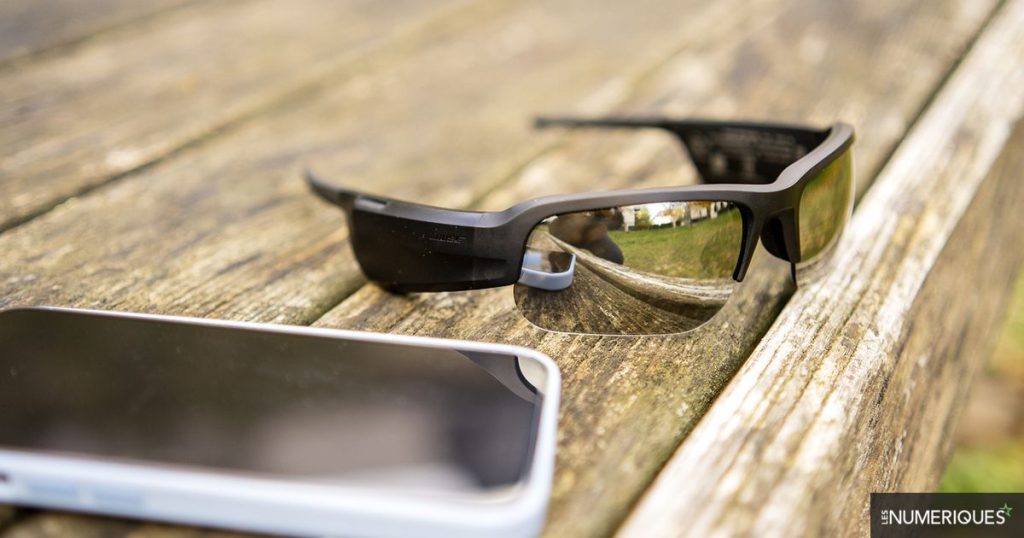
Bose Frames Tempo review: sound before style… and comfort
The note may seem obvious, but let’s make a similar entry point: Because of the very special nature of audio glasses, we measure the listening experience provided by taking into account the specificity of that product. Of course, you shouldn’t expect the same experience as with a traditional portable headphone, or even with a bone conduction headphone.
Fortunately, the Bose Frames Tempo is far from offering an audio experience as disappointing as that offered by their big sisters, the Bose Frames Soprano. But you still need to be able to wear and position them optimally …
In an ideal setting, the Tempo tires are already able to deliver an audio show that is highly compatible with their sonic capabilities. As in the Soprano Frames, here we have the right to a good sonic balance, with the big difference being that these ‘sport’ sunglasses drop more in the bass, so we can finally feel the minimum depth of seat and roundness, for a result more comprehensive logical. Stretching at the other end of the audible spectrum is also more vocal, resulting in a more airy sound and creating a more “open” and slightly more defined sonic space.
The midrange enhancement also contributes to this better impression: the sound is very sharp, clear, without being aggressive, the vocals and many other instruments stand out more easily. The other reason comes from the accuracy of the restoration: the system included in Bose Frames Tempo is generally more detailed and cleaner than that of Frames Soprano, and therefore we can better distinguish what is going on, even if the pieces are instrumentally rich and the harmonics are still quite chaotic, especially when it comes to reproducing Sequential effects very quickly in the bass (bass drum thumps, floor roll, etc.).
The other major Achilles’ heel concerns the recovery of dynamics, which are particularly flat: you can hardly notice any difference between moments of calm and flights. On top of that, there’s an absolute crush to it when the listening level is cranked up too much, which is accompanied by a gradual dip in the bass. Some pumping effects appear beyond 75/80% of the volume, spoiling any content appreciation. Given the complete absence of sound insulation, it will therefore be necessary to look for a suitable “sweet spot” in terms of volume, in order to adequately cover the possible ambient noise pollution without spoiling the listening quality (and without disturbing people too much nearby, the high directivity of the loudspeakers is still has its limits).
As we said above, this estimate and this experiment are obviously only valid when the glasses are well placed and the speakers are well aligned…which is by no means guaranteed given their divisive design. If the glasses don’t find their place properly, there’s a good chance your speakers are out of alignment and you’re simultaneously experiencing a loss of volume, bass, and high treble. Suffice it to say, the experience couldn’t be more pleasant…

“Incurable web evangelist. Hipster-friendly gamer. Award-winning entrepreneur. Falls down a lot.”
